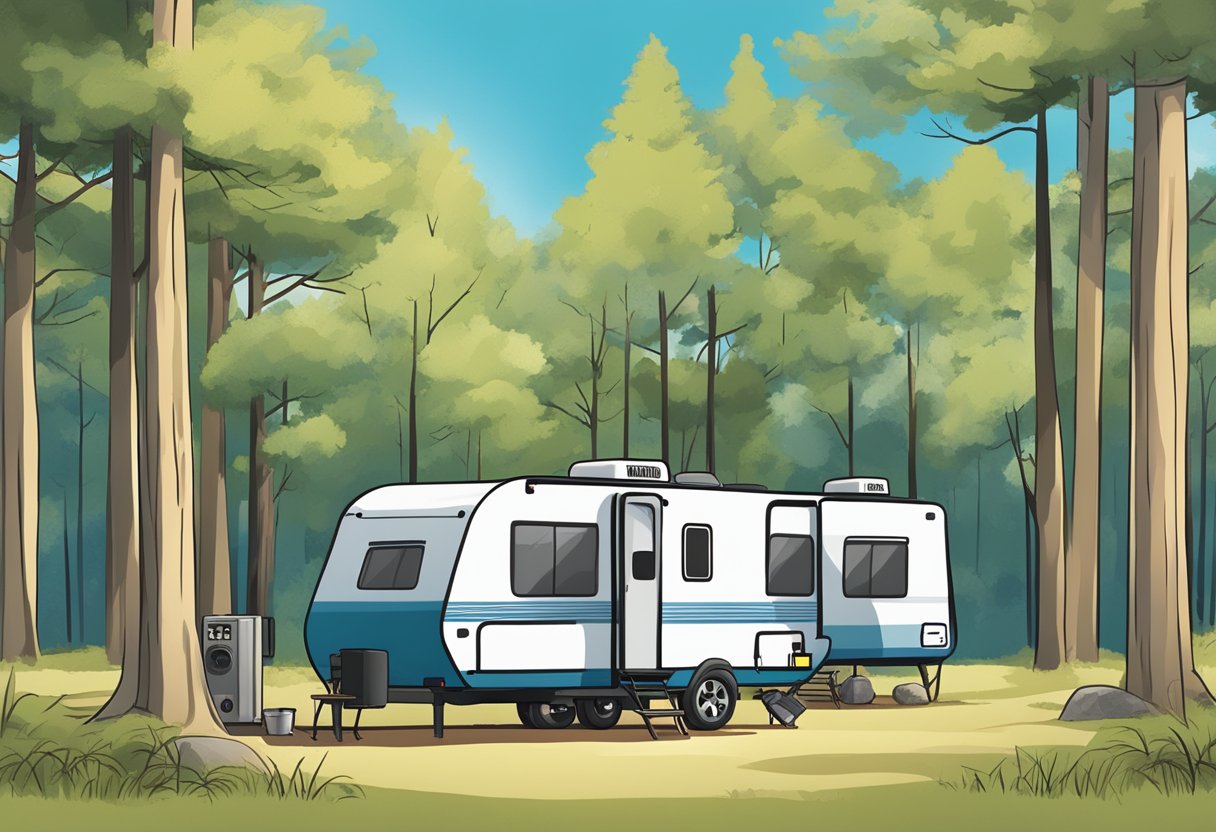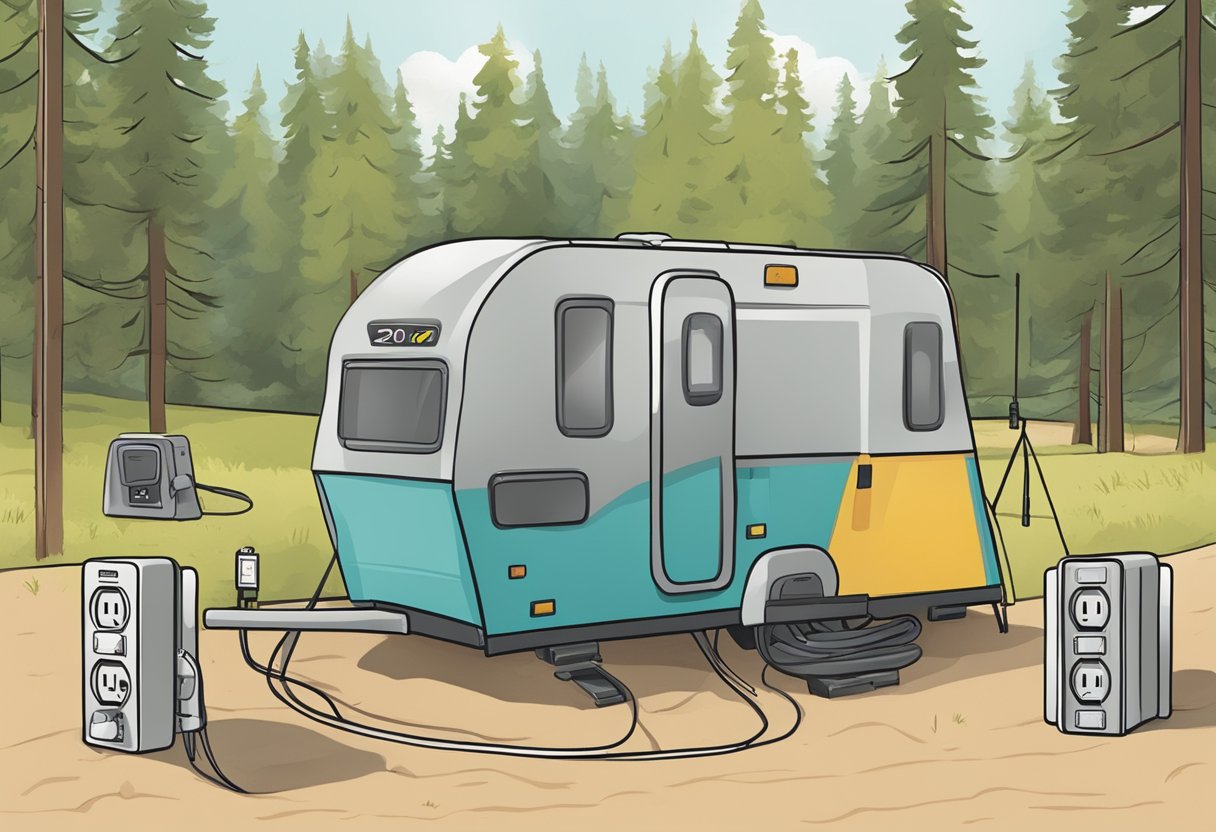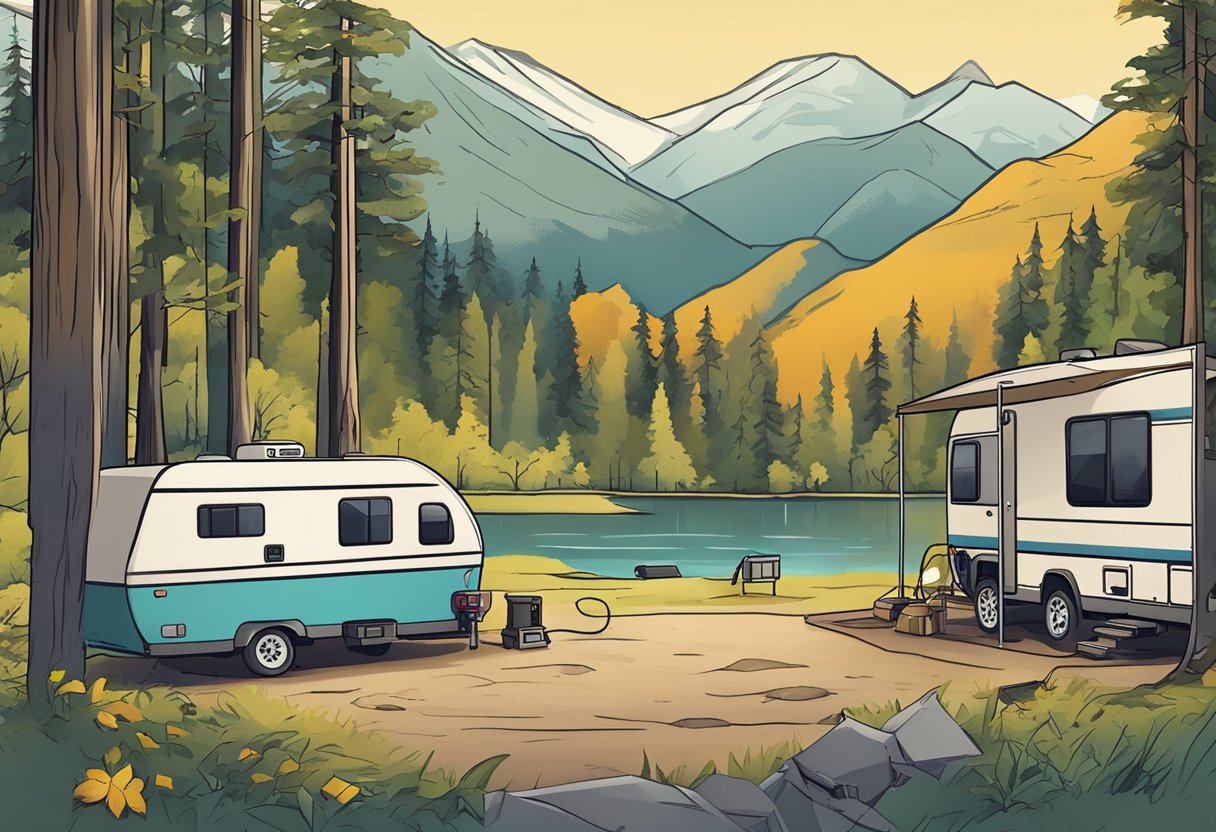If you’re new to RV camping, you may be wondering about the difference between a 20 amp and a 30 amp system. Understanding the difference between these two types of electrical systems is crucial to ensure you have the power you need to run your appliances and devices. In this article, we’ll explore the key differences between 20 amp and 30 amp camping and help you determine which system is right for your needs.

The primary difference between a 20 amp and a 30 amp system is the amount of power available. A 20 amp system is suitable for lighter power needs, while a 30 amp system can handle larger appliances and more power-intensive devices. For example, a 20 amp system can typically power a few lights, a small TV, and a laptop, while a 30 amp system can power a larger TV, a microwave, and an air conditioner. Understanding the power requirements of your RV appliances and devices is essential to ensure you have the right electrical system for your needs.
Understanding Electricity in Camping

When it comes to camping, understanding electricity is crucial to ensure a safe and enjoyable experience. In this section, we will cover the basics of electricity in camping, including amps, volts, watts, circuit breakers, and safety.
Amps, Volts, and Watts
Amps, volts, and watts are the basic units of electricity. Amps (A) measure the current flow, volts (V) measure the electrical potential difference, and watts (W) measure the power consumption. In camping, the most common electrical systems are 20 amp and 30 amp.
A 20 amp system can handle up to 2,400 watts, while a 30 amp system can handle up to 3,600 watts. This means that a 30 amp system can handle larger appliances and more power-intensive devices, while a 20 amp system is suitable for lighter power needs.
The Role of Circuit Breakers and Safety
Circuit breakers are an essential safety feature in camping. They protect the electrical system from overloading and prevent electrical fires. A circuit breaker is designed to trip when the current flow exceeds the rated amperage of the circuit.
In camping, it is important to use circuit breakers that match the amperage of the electrical system. For example, a 20 amp circuit breaker should be used with a 20 amp system, and a 30 amp circuit breaker should be used with a 30 amp system.
Safety is also a critical consideration in camping. Always follow the manufacturer’s instructions for your electrical devices, and never overload the electrical system. Be sure to use only outdoor-rated extension cords and ground fault circuit interrupters (GFCIs) to reduce the risk of electrical shock.
In summary, understanding electricity in camping is essential to ensure a safe and enjoyable experience. Remember to always use the appropriate electrical system and circuit breakers, follow the manufacturer’s instructions, and prioritize safety.
Comparing 20 Amp and 30 Amp Systems
When it comes to camping with an RV, understanding the difference between 20 amp and 30 amp systems is crucial. In this section, we’ll provide an overview of both systems to help you make an informed decision.
20 Amp Systems Overview
A 20 amp system is the most common electrical setup in campgrounds. This system provides 2,400 watts of power, which is enough to run basic appliances like a microwave, small air conditioner, or a few lights. However, if you plan to use more than one appliance at a time, a 20-amp system may not be sufficient.
30 Amp Systems Overview
A 30 amp system is a step up from a 20 amp system, providing 3,600 watts of power. This system is ideal for powering larger appliances like air conditioners, refrigerators, and televisions. With a 30 amp system, you can run multiple appliances at once without worrying about overloading the system.
When comparing 20 amp vs 30 amp camping systems, it’s important to consider your power needs. If you only plan to run a few basic appliances, a 20 amp system may be sufficient. However, if you plan to use larger appliances or run multiple appliances at once, a 30 amp system is the better choice.
It’s worth noting that not all campsites provide 30 amp service. In these cases, you can use an adapter to connect your RV’s 30 amp or 50 amp plug to a site’s 20 amp outlet, and vice versa. Always carry a couple of adapters with you as they’re the Swiss Army knife in your RV’s toolkit, ensuring you’re never stuck without power.
In summary, a 20 amp system provides 2,400 watts of power, while a 30 amp system provides 3,600 watts of power. When choosing between 20 amp vs 30 amp camping systems, consider your power needs and the availability of 30 amp service at the campsites you frequent.
RV Electrical System Essentials
When it comes to RV camping, understanding your electrical system is crucial. Your RV’s appliances and power needs will determine whether you need a 20 amp or 30 amp electrical system. In this section, we will go over the essentials of RV electrical systems, extension cords, and adapters.
RV Appliances and Power Needs
RV appliances come in different sizes and power requirements. For example, your air conditioning unit may require more power than your refrigerator. It is essential to know the wattage and amperage requirements of each appliance to determine what type of electrical system you need.
A 30-amp system provides 3,600 watts of power, while a 20-amp system provides 2,400 watts of power. If you plan to run multiple appliances simultaneously, a 30-amp system may be necessary.
Extension Cords and Adapters
Extension cords and adapters are essential tools for RV camping. You may encounter campsites with different electrical system options, and having the right adapters and cords can make all the difference.
When choosing an extension cord, make sure it can handle the amperage of your RV’s electrical system. A cord that is too thin or too long can cause voltage drops, which can damage your appliances.
An adapter allows you to connect your RV’s 30-amp or 50-amp plug to a site’s 20-amp outlet, and vice versa. Always carry a couple of adapters. They’re the Swiss Army knife in your RV’s toolkit, ensuring you’re never stuck without power.
In conclusion, understanding your RV’s electrical system, appliances, and power needs is crucial for a successful camping trip. Make sure you have the right extension cords and adapters to ensure your RV is always powered up.
Camping Gear and Power Supply
When it comes to camping, one of the most important things to consider is your power supply. Choosing the right equipment and managing your electricity consumption can make all the difference in your camping experience.
Choosing the Right Equipment
Before heading out, make sure you have the right equipment for your power needs. Most campsites offer either 20 amp or 30 amp electrical service, so it’s important to know what your RV or motorhome requires. For example, if you have an air conditioner, electric water heater, or other high-power appliances, you may need a 30 amp service. On the other hand, if you have a smaller RV or motorhome and don’t require as much power, a 20 amp service may be sufficient.
It’s also important to consider the type of camping equipment you’ll be using. Appliances like a coffee pot, toaster, or microwave can all add to your power consumption. To save power, consider using a French press or percolator instead of a coffee pot, and a stovetop toaster instead of an electric one. Additionally, using LED lights instead of traditional lighting can help reduce your power consumption.
Managing Electricity Consumption
Even with the right equipment, it’s important to manage your electricity consumption while camping. One way to do this is by turning off appliances when they’re not in use. For example, turn off lights when you leave the room, and unplug appliances like a coffee pot or toaster when you’re done using them.
Another way to manage your electricity consumption is by using a power management system. These systems can help you track your power usage and alert you when you’re getting close to your power limit. Additionally, they can automatically shut off power to non-essential appliances when you’re running low on power.
Finally, it’s important to be mindful of your power consumption when using appliances like heaters or air conditioners. These appliances can use a lot of power, so it’s important to use them sparingly and only when necessary.
By choosing the right equipment and managing your electricity consumption, you can ensure a comfortable and enjoyable camping experience while also conserving power.
Protection and Maintenance

Surge Protectors and EMS
When it comes to protecting your RV and its electrical system, surge protectors and electrical management systems (EMS) are essential. These devices help protect your RV from low voltage, power surges, and other electrical issues that can damage your RV’s electrical system.
A surge protector is a device that plugs into your RV’s electrical system and protects it from power surges. Power surges can occur when there is a sudden increase in voltage, which can damage your RV’s electrical system. Surge protectors are designed to detect these power surges and divert the excess voltage away from your RV.
An EMS is a more advanced form of surge protection that not only protects your RV from power surges but also monitors the electrical system for other issues. An EMS can detect low voltage, high voltage, and other electrical issues that can damage your RV’s electrical system. It can also shut off power to your RV if it detects a problem, preventing damage to your RV.
Troubleshooting Common Issues
Even with surge protectors and EMS, RVers may still encounter electrical issues while camping. Here are some common issues and how to troubleshoot them:
-
Tripping Circuit Breakers: If your RV’s circuit breaker keeps tripping, it may be due to overloading the circuit. Try unplugging some appliances and see if that resolves the issue.
-
Low Voltage: If you notice your RV’s lights flickering or your appliances not working properly, it may be due to low voltage. This can be caused by a variety of factors, including a faulty electrical connection or a problem with the campground’s electrical system. Try unplugging some appliances to reduce the load on your RV’s electrical system.
-
Power Surges: If you experience a power surge, your surge protector or EMS should protect your RV’s electrical system. However, if you notice any issues after a power surge, such as appliances not working properly, it’s best to have a professional inspect your RV’s electrical system.
In conclusion, protecting your RV’s electrical system is essential for a successful RV life. Surge protectors and EMS can help prevent damage from electrical issues, but it’s still important to troubleshoot common issues that may arise while camping.